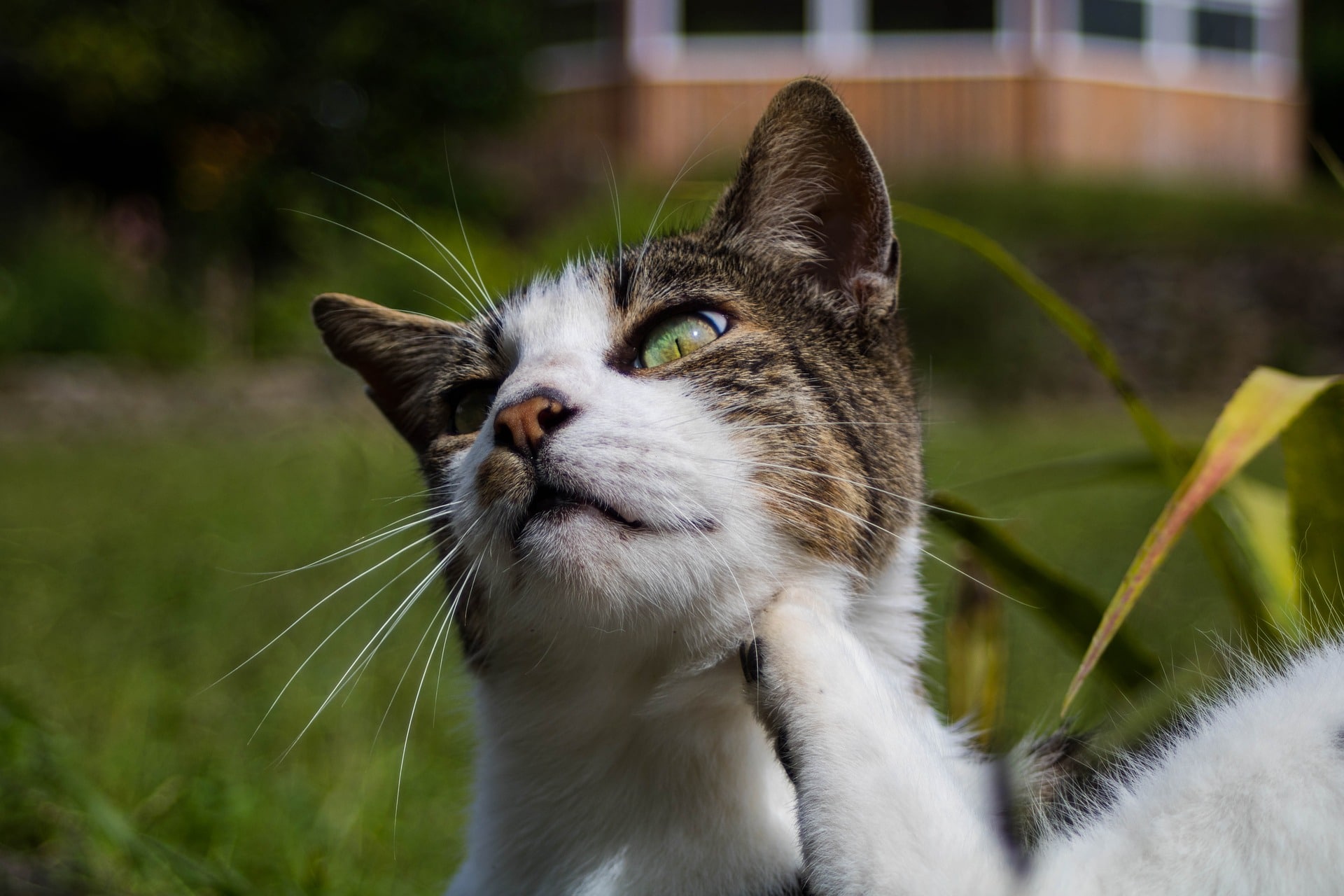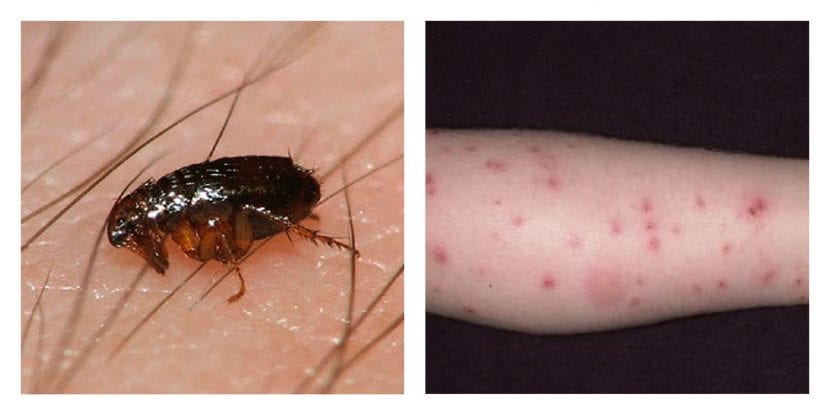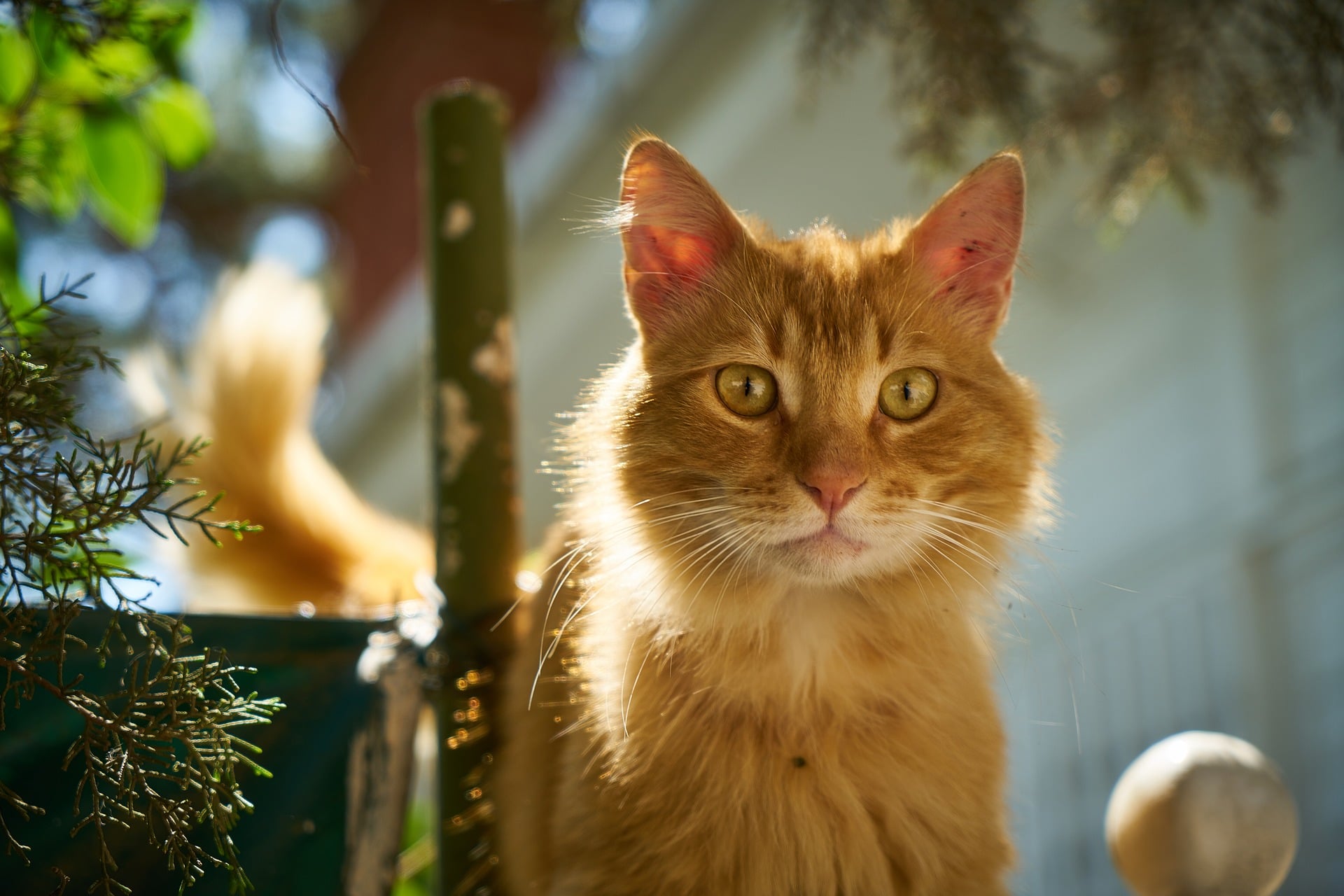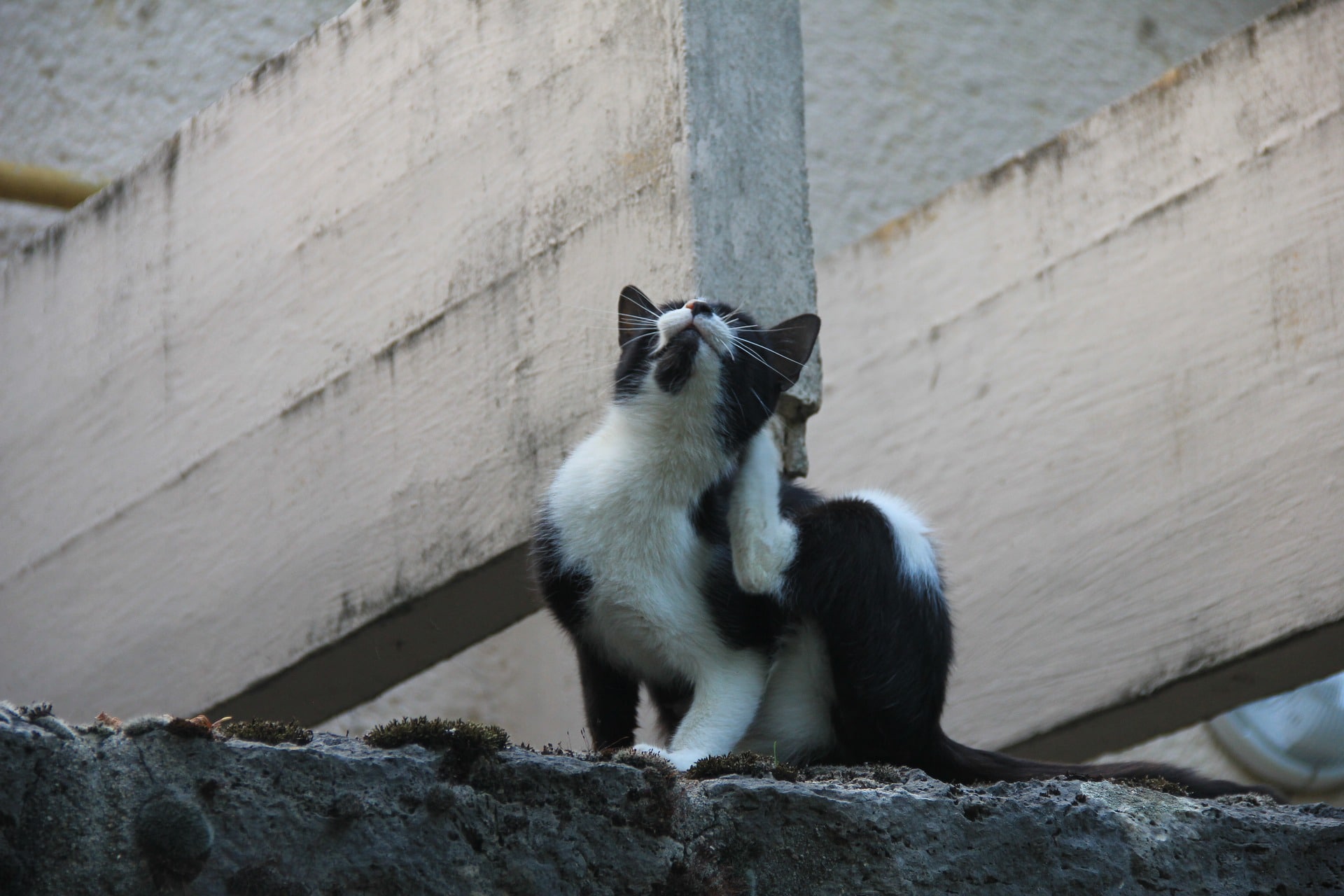
The fleas. It is thinking about them and immediately we experience an itchy sensation throughout the body. Those of us who live with pets know well how annoying they can be, both for us and for our dear furry friends.
They multiply so quickly that, if we don't act in time, they can invade your home in a matter of very few days. Given this problem, in addition to doing preventive treatments with antiparasitics, it is important to know how to spot a flea biteWell, sometimes, even if we are treating our cat, it may be the case that it is not effective enough.

Fleas are one of the parasites that we least want to have at home. They are tiny, but terribly uncomfortable. But what are its physical characteristics? As well, These are blood-feeding parasites that are 2 to 7mm long, have a brown oval-shaped body, a very small head, and six legs, with the hind legs being very long.. They do not have wings.
During the spring and summer, and even in the fall if you live in a warm climate, they multiply very quickly, to the point that a female can lay more than 40 eggs a day. Before this problem, How do I know if I have been bitten by a flea or another parasite?
Well, there are many types of fleas: cat, dog, pigeon, and even human. If you notice a sting on your feet, on the back of your ears, or on your arms, you probably have an infestation in your home or garden. You will know it true if you see that the affected area has become a little inflamed and has turned red, with a dot in the middle.

Image - Lasaludfamiliar.com
To eliminate them, there are several things you have to do:
- Putting an antiparasitic treatment on your catThe pipette is especially recommended as it is a liquid that lasts for one month and eliminates not only fleas that the animal already has, but also those that can adhere to its body.
- Clean the whole house thoroughly: sheets, tablecloths, cushions, floors, furniture, ... everything. Clean the floor with hot water to which you will have added a few drops of insecticide.
- Treat your garden with insecticides like Flee or Zotal. Of course, you have to be very careful with animals since they are toxic products for them.
How do I know if my cat has fleas?
In addition to knowing how to identify a flea bite, it is necessary to recognize if our feline friend has fleas. Normally cats that go outside if they do not have the correct flea collar or are not supplied with flea pipettes, it is possible that they return home with these tiny and undesirable insects.
When spring brings warm weather, it can be visited by some unwanted guests. Fleas become most active when temperatures are favorable (35 ° C and 70 percent relative humidity are ideal conditions for flea populations). In parts of the world where winter temperatures drop below this for more than 40 hours per month, homes and pets take a little rest from flea activity.
Fleas are, in fact, very active insects, feeding on the blood of your cat and you. They jump on passing animals and burrow into the skin where they remain well hidden while biting and ingesting blood. This is irritating to the animal, and also to humans, as bites can cause severe itching and inflammation..
Next we are going to explain how to know if your cat really has fleas. The signs it has and how to check to find these undesirable guests in the fur.
Behavioral signs
In severe infestations, it is easy to spot fleas jumping and moving in and out of your cat's body. In less obvious situations, you may notice that your cat is restless and scratches or chews more in certain areas of his body. Frequent head shaking and ear scratching is another indication of a possible flea infestation in your cat.
Excessive and constant licking of the fur is another sign of potential fleas, especially in cats. Many cats will even remove fleas from their fur before you have a chance to see the evidence.
Check the skin and hairstyle

To see real fleas on your pet, you may have to take a quick look. Fleas can jump very fast and very high. Fleas are very small insects. Flat-bodied they are dark brown, almost black. The more blood they ingest, the lighter its color can be.
Flip your cat over on its back and check for areas that allow fleas to hide. The armpits and groin are two warm and protected areas; favorite places for fleas to hide. Check your cat's ears carefully for signs of scratches, redness, blood, or dirt.
All of these can be signs of fleas. The skin on the belly, groin, or base of the tail may appear red and patchy, especially if your cat is scratching a lot. Hair loss can occur in certain areas that are being scratched excessively, and there may be black patches on the skin along with scabs.
Get a flea comb (a specially made comb with clenched teeth) and run it through the hair on your cat's back and paws.. The teeth of the comb are designed to catch and remove fleas from under the fur where they hide. Make sure to get close to the skin when combing through your hair to give yourself a better chance of reaching the flea hiding place. Keep a bowl of soapy water handy to suffocate live fleas when you find them while you comb them.
One trick that can help if fleas are hard to see is to place a piece of white paper or a paper towel on the ground next to your pet while you go through his hair. Flea dirt (i.e. flea feces) will fall off the cat's fur and onto the paper. One way to differentiate between normal dirt and flea "dirt" is to moisten the black spots that fall from the cat onto the white paper towel (using regular water sprayed on the spots). If they turn a dark reddish brown, you are looking at the digested blood that the flea has passed through its body and excreted.
How to prevent fleas on cats
Clearly, fleas are not fun for your animal, nor are they fun for you. Here are some precautionary measures you can take to keep your cat safe from flea bites.
Non-toxic flea treatments are a great way to keep your feline flea-free. These come in topical and neck forms and generally provide effective protection. Another way to prevent fleas is to clean your cat's bedding. While cats enjoy keeping clean, you'll need to wash bedding and areas of the house where he enjoys lounging.
Also, you have to make sure to keep the yard clean and flea-free. If your cat likes to roam in the grass, keeping her groomed is an effective way to rid the area of fleas. Using a non-toxic flea treatment also helps keep those pesky critters away from your furry friend. For any questions about these non-toxic prevention treatments for your cat, talk to your vetSurely he will be able to guide you on some effective ones that suit your budget and the needs of your cat.
Treatment: How to Get Rid of Fleas on Cats

In addition to what was discussed in the first part of this article about flea elimination, we want to add the following:
- Brush your cat with a flea comb and soapy water
- Bathe your cat with flea shampoo
- Spray your cat with a special flea spray
It's important to note that being proactive is the key to getting rid of pet fleas (and keeping them away). Fleas lay eggs regularly, sometimes up to 50 per day. Therefore, their treatment products can kill adult fleas, while fleas in the egg or larva stage of the flea life cycle can still develop. Don't be discouraged if fleas seem to reappear, this doesn't mean the products aren't working, it just means that you have to keep preventing another flea life cycle from the start. This cycle is part of what makes a flea infestation so difficult to extinguish. But with vigilance and consistency, you can eliminate pests from your pet..
If you need more information, Click here.